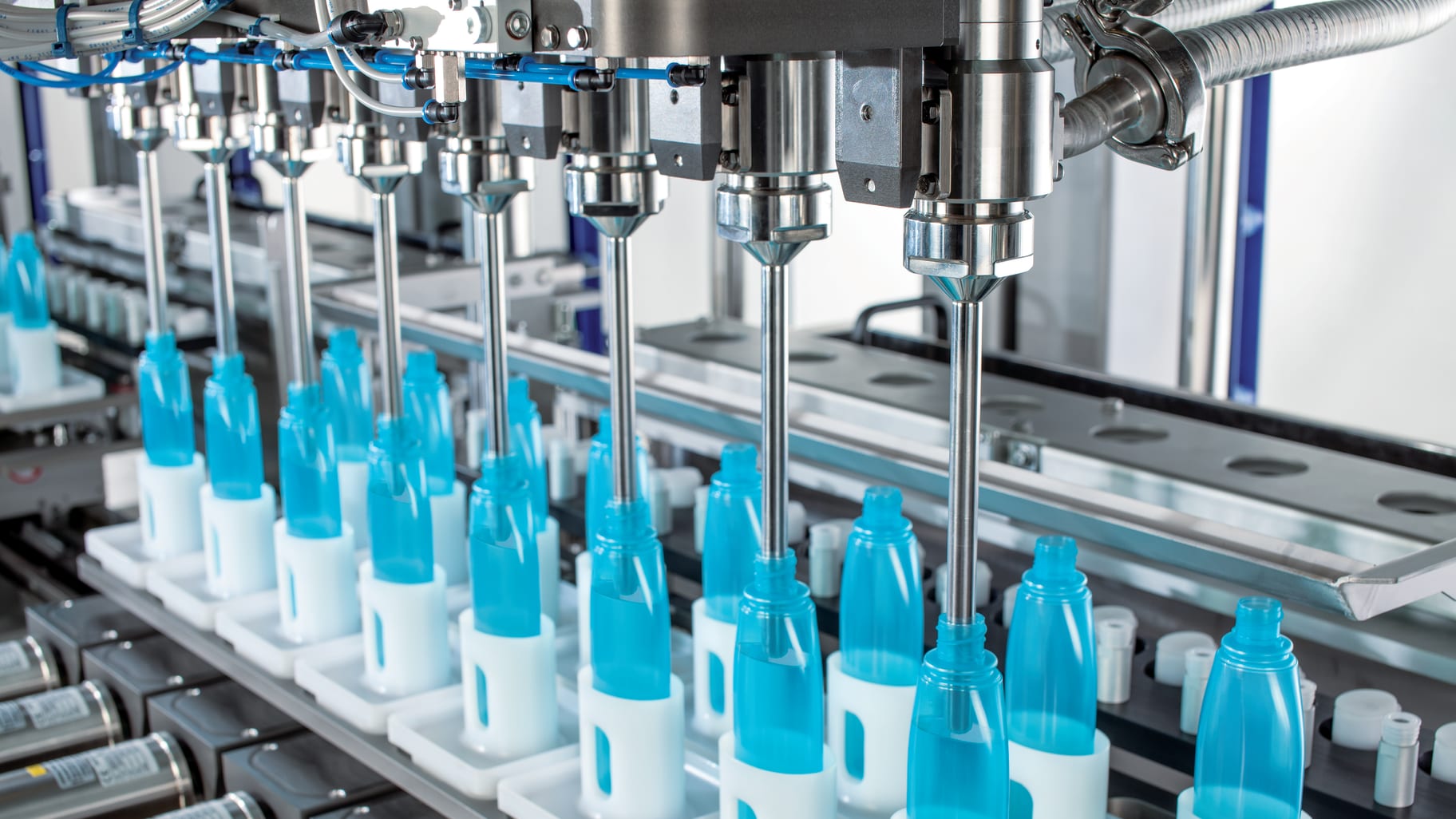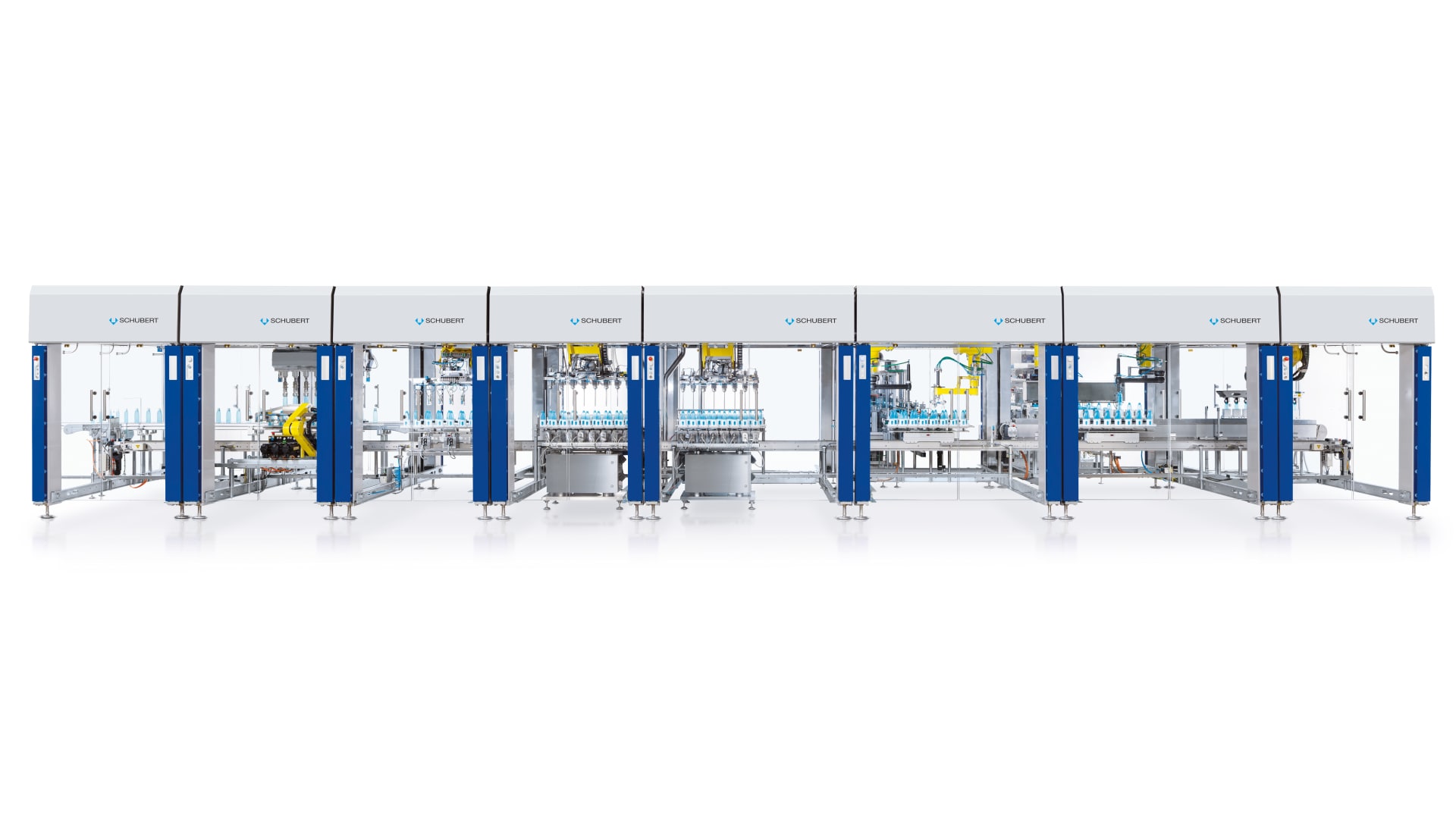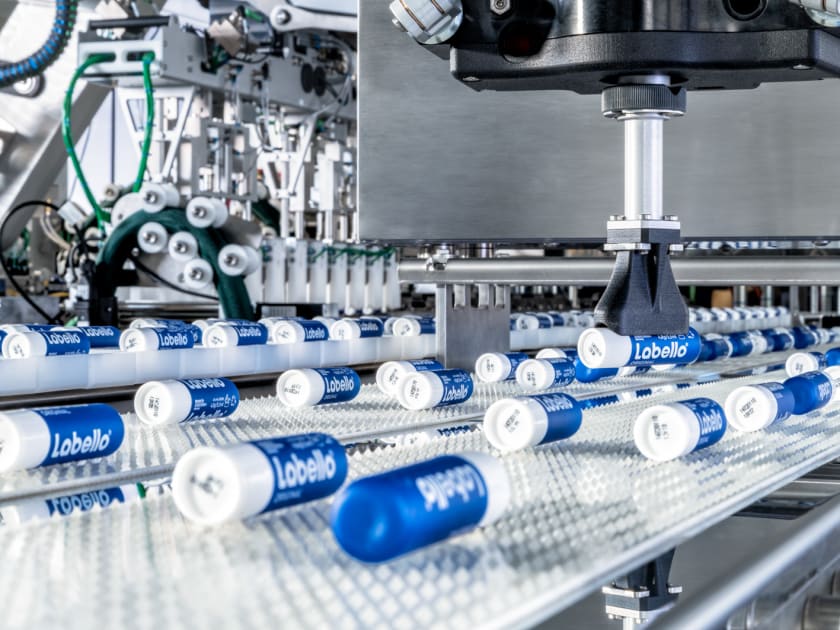The types of cosmetics to be filled at the production site in question, ranged from low-viscosity products such as face lotions to high-viscosity shower gels. The packaging is also characterised by a large variety of sizes, shapes and caps. The previous packaging line was based on established standards with corresponding performance data. These lines were capable of filling no more than 30 to 40 bottles per minute. In certain cases, personnel had to be allocated to handle accompanying manual activities such as cap attachment. While converting or cleaning the lines, downtimes of several hours were the norm.
Less is more
Schubert developed a solution for the customer that features an intelligent control and robots with exchangeable tools as well as a simple mechanical design. This makes the line flexible, enables it to accommodate a great variety of sizes and ensures short conversion times. The cosmetics manufacturer was able to cut conversion times in half and has reported very short restart times.








